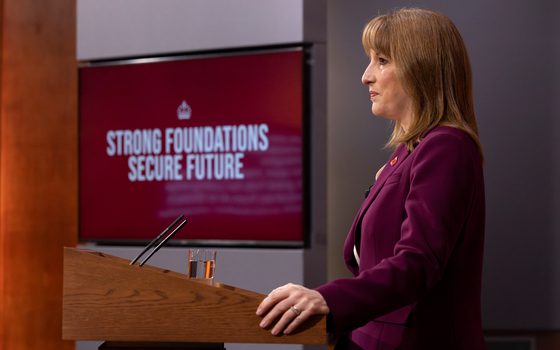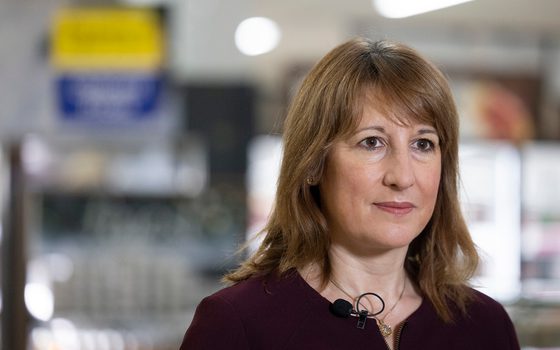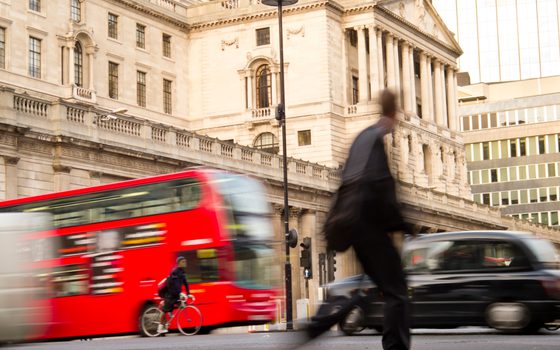Much ado about high interest
The money’s there to tackle the cost of living crisis, but our politicans don’t want to spend it
21 July 2023
This government urgently needs to help people through the cost of living crisis and tackle climate breakdown – but they’re reluctant to spend anything even when figures from June show the government borrowed less money than expected. So why won’t this government make the investments we need for a safer, fairer future? As the Bank of England has increased interest rates borrowing costs for the government have gone up. But that doesn’t mean the government is running out of money (despite some journalists and politicians claiming otherwise). A mixture of poor economic understanding and political ideology is hiding the reality: the government is able to raise the money it needs, it’s choosing not to.
Borrowing costs for the government are set by government bond markets, where banks and other financial firms lend the government money which the government then pays back over time with a return. The returns on these bonds are the interest the government pays. So, the returns investors are looking for will influence the cost of government borrowing. The government will offer a bond with a certain payout and banks will bid on these bonds at auction, the lower the price they bid the higher their return from this payout. What returns investors want will depend on a variety of factors, including what other investment options are available, how the government will use the loan and the bank’s desire to hold onto money or invest it.
High interest rates occur for a number of reasons – some more concerning than others. Some commentators, are comparing our current situation with last September, when interest rates skyrocketed as Truss’s budget announcements were seen as politically incompetent. Cutting taxes for the super-rich during a devastating cost of living crisis, without any democratic mandate, led to investors demanding a “incompetency premium” on their returns, and this led to higher interest rates for the government.
In contrast, the higher rates we’re now seeing are more a reflection of economic context than political crisis. High interest costs are largely a reflection of the Bank of England’s (anticipated) interest rate rises. What investors expect the Bank’s interest rate to be over time is generally the minimum they are willing to accept as a return for a bond over the same period. Market interest rate expectations of over 5% for the next two years means investors who lend to government expect to be paid back with a return above 5% over the next two years.
The effects of these high interest rates are still a concern. The cost of government borrowing is going up and, alongside the Bank of England’s interest rate rises, this is having a knock-on effect on those in debt. The Bank’s strategy is to intentionally cause higher debt and mortgage repayments to dampen demand. But, with the effectiveness of this strategy being questioned by mainstream economists, we need another way out of the cost of living crisis. Fiscal measures, which come from the government rather than the Bank of England, could be much less painful for ordinary people.
The government is entirely able to afford to invest in measures to improve living standards in the UK. While higher interest rates make government borrowing more expensive, they do not make it impossible. Recent sales of two-year bonds, intended to raise £4bn, received over £11bn worth of offers, showing there is demand for more borrowing. The real choice is whether the government thinks this spending is worth the higher cost — their current actions suggest a resounding no.
Government interest rates have risen in recent months but in historical terms they are quite low. While journalists and politicians sensationalise high borrowing costs, the cash value of these naturally rise with GDP growth and inflation. Therefore, looking at borrowing costs adjusted for inflation (real borrowing costs) is more insightful.
Instead of focusing on the cash cost of borrowing we should consider the economic cost instead – not how much money needs to be paid later on but how much purchasing power the money has as it is paid back. The real borrowing costs can fall even when cash borrowing costs are rising due to rising inflation. Looking at borrowing costs from this perspective shows that, even with recent increases, borrowing costs are still below the pre-financial crisis average when borrowing helped fund Sure Start and reduced NHS waiting times.
The real cost of borrowing is still at historic lows
If our politicians are still concerned about borrowing costs there are two key ways to deal with current pressures that are far preferable to an austerity mindset, that damages future growth and can increase indebtedness.
Firstly, the government could save up to £100bn in the next 5 years by not funding the Bank of England’s interest payments to commercial banks. A tiered reserve system would mean less interest paid to commercial banks to conduct monetary policy or a deferred asset system — like in place at the US Federal Reserve – would mean the treasury wouldn’t have to fund the central bank’s losses.
Second, by raising taxes on the wealthy and big businesses the need to borrow could be lessened. Such taxes could help dampen demand and lessen inflation while making sure the cost was borne by the wealthiest.
Along with the Bank of England, the government is telling the British public to grit their teeth and bear it. But the international picture shows us that there are alternatives: Spain’s inflation is now under 2%, after the Spanish government introduced a host of interventions, including energy price and rent controls. In the US, the Inflation Reduction Act promises billions to be spent on climate, and America’s inflation rate is now under 4% and falling.
We should follow their example now to provide social support and combat climate change, the cost of not doing so could be much larger in the long-term.
Topics Macroeconomics Public services






